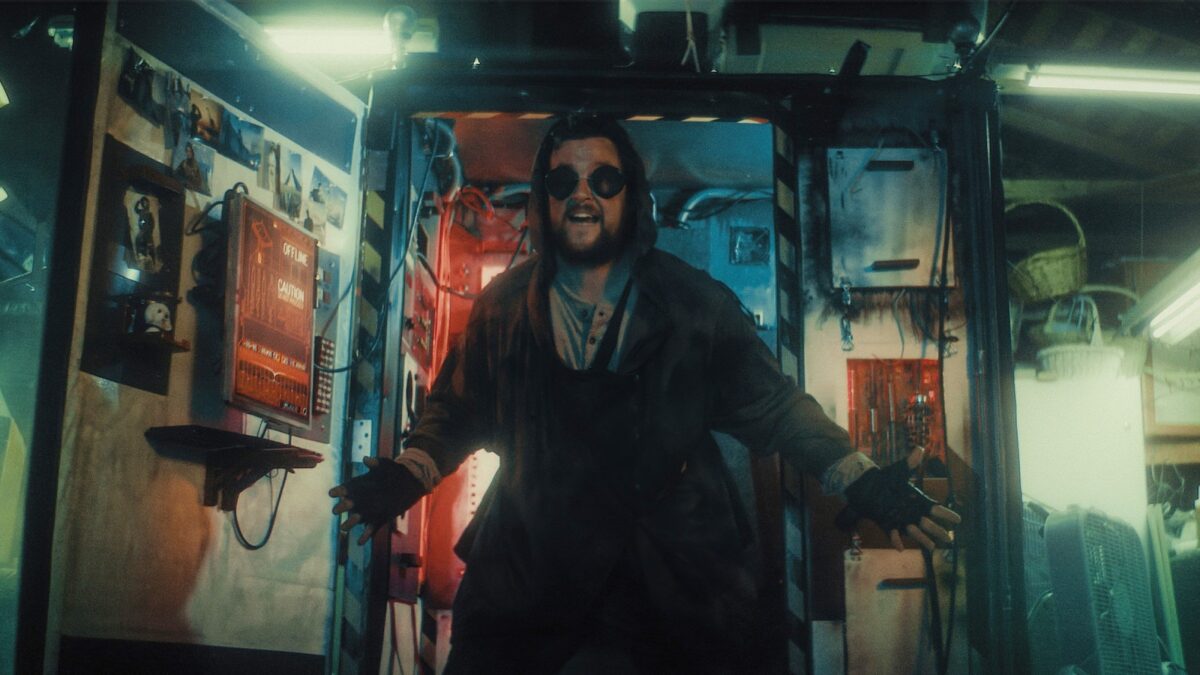
Shoot in a location you can control.
This post was written by Kyle Vorbach.
Let’s say you have the next big idea, a James–Bond-meets-The–Witcher globetrotting thriller where a modern-day Van Helsing assassinates monsters around the world. Good luck making that on your own.
What you can shoot on your indie budget is a single-location film, a phrase that you’ve probably heard many times before. But without nuking Transylvania to save the President’s daughter, how do you maintain your audience’s interest?
On my latest short that I directed and co-wrote, Somewhere In Between, my writing partner John Horan and I managed to give our indie short the feeling of a summer blockbuster. Here are three specific takeaways from writing that film, which premieres at Tribeca in June.
Add Layers to Your Conflict
The location is the first layer of conflict– the external conflict. The house you’re shooting in? It’s haunted. The diner? Prejudiced. The submarine? Sinking. Whatever. The top layer of your story conflict is woven into the setting itself and gives the characters something to do and fight against. This is your movie poster.
Beneath that layer, the characters are the second layer of conflict – the interpersonal conflict. In the haunted house example, this conflict might be two siblings fighting over who inherits the estate.
Finally, the deepest layer of conflict – the internal conflict, or the secret. The two aforementioned siblings encounter ghosts while searching for their father’s will, and in doing so, solve the internal conflict — overcoming their guilt of not being there in his last days.
Our film Somewhere In Between is a rom-com flip of Back to the Future, where a time traveler from the future demands two friends fall in love to save the timeline.
Our conflict maps out like this:
LOCATION/EXTERNAL CONFLICT: At their house, they must fix a time machine to save the universe.
CHARACTER/INTERPERSONAL CONFLICT: Do they love each other? Or are they just friends?
SECRET/INTERNAL CONFLICT: I don’t want to spoil it, but everyone in our film has something to hide here.
What’s important is that all these conflicts line up. By solving the internal, they solve the interpersonal, and ultimately, the external.
Travel Into Your Concept and Characters
Action sequences and exotic locations are an easy but expensive way of making it seem like things are happening in your story. The difficult, but affordable way is by, well… making things happen in your story. Every piece of information you have is valuable and should be treated as a reveal.
Here are the beats of our first act:
-
Two friends try to have a simple New Year’s Eve.
-
BUT… one has feelings for the other.
-
BUT…a time traveler accosts them.
-
AND… demands they fall in love, or the timeline is destroyed.
-
BUT… they’re afraid to.
Each of those setups, we treated like its own reveal.
In the first few minutes of our short, the viewer’s understanding of the film changes at least five times. Guess what? Now we get to resolve every one of those plot points. If you’re stuck in one location, you can keep your audience engaged by doling out story beats quickly.
Make Your Single Location Feel Like Many Locations
Even if you write a multi-layered conflict with rapid-fire story developments, we still have to recognize that staring at the same old scenery for an entire film can get boring. The solution: making your single location aesthetically changes throughout the movie.
Justify a change in the time of day, or make your characters rearrange the furniture. Maybe the power goes out! Your audience should be able to look at a scene and visually identify what part of the movie it is from. This scratches the “production value” itch people want out of their entertainment and keeps things fresh.
In our short film, because we had a time machine as a plot device can explore the conflict in the present but also include a past timeline with its own aesthetic, all within the same house.

What You Should Take Away
Watch some single-location films and pay attention to how they pull these off. All of these problems need to be solved in Final Draft, not on set. And once you nail this script, get going on that modern-day Van Helsing script. That one is going places for sure.
For more takeaways on making your indie film feel bigger than it is, check out my video series on this, where I will be going more in-depth on topics like this, from improving your film in post with AI to saving money with easy previsualization.














